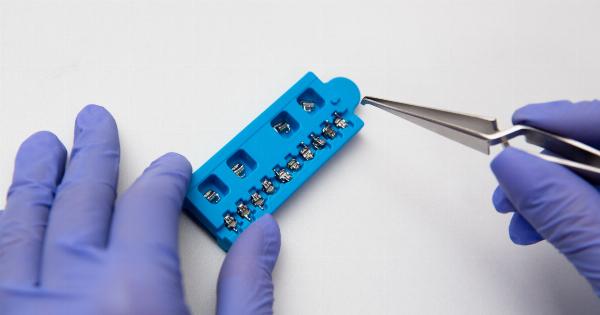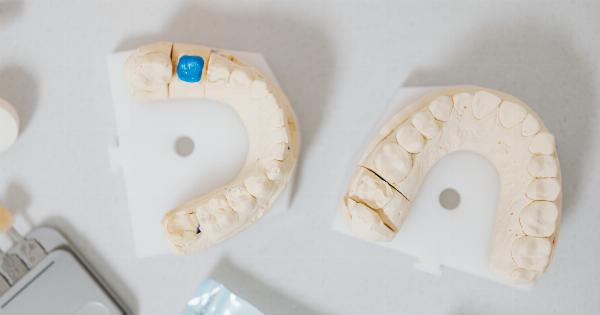Braces are orthodontic devices used to realign teeth and correct the bite. They are typically made up of brackets that are attached to each tooth, a wire that goes through the brackets, and rubber bands that hold the wire in place.
Braces work by exerting a constant, gentle pressure on the teeth, gradually moving them into the desired position over time.
Why do people get braces?
There are many reasons why someone might need braces:.
- Crooked teeth
- Overcrowding
- Overbite
- Underbite
- Crossbite
- Gaps between teeth
- Jaw problems
If left untreated, these issues can lead to problems with biting, chewing, speaking, and even breathing. They can also contribute to tooth decay and gum disease, as crooked teeth are harder to clean.
How long do braces take to work?
The length of time it takes to straighten teeth with braces varies depending on the severity of the problem. Typically, braces are worn for between 18 and 24 months, but some cases may require longer treatment.
What are the different types of braces?
There are several different types of braces to choose from, including:.
Metal braces
These are the most common type of braces, and are made up of metal brackets and wires. They are very effective at correcting all types of bite problems, but are also the most noticeable.
Ceramic braces
These braces are similar to metal braces, but the brackets are made of clear or tooth-colored material, making them less noticeable.
They are a good option for adults or teenagers who are self-conscious about their appearance, but may be more fragile and require more frequent adjustments.
Lingual braces
These braces are attached to the back of the teeth, making them virtually invisible.
They are a good option for people who want the benefits of braces without the noticeable appearance, but can be more difficult to clean and may take longer to adjust to.
Invisalign
Invisalign is a type of clear plastic aligner that is custom-made for each patient’s mouth. The aligners are worn for 22 hours a day and are changed every two weeks.
They are virtually invisible and can be removed for eating and cleaning, but may not be as effective at correcting more severe bite problems.
How do braces correct teeth alignment?
Braces work by exerting a constant, gentle pressure on the teeth, gradually moving them into the desired position over time. Here’s how it works:.
- First, the brackets are attached to each tooth using a special adhesive.
- Then, a wire is threaded through the brackets.
- The wire is tightened, exerting a gentle pressure on the teeth.
- Over time, the teeth begin to shift in response to the pressure.
- The braces are adjusted regularly to ensure that the teeth are moving in the right direction.
- Once the teeth are in the desired position, the braces are removed and a retainer is worn to keep the teeth from shifting back.
What does it feel like to wear braces?
Wearing braces can take some getting used to, but most people find that any discomfort is minimal and quickly subsides. Here are some things you might experience:.
- Discomfort or soreness after the braces are initially put on, or after they are adjusted
- Irritation or soreness in the cheeks, tongue, or lips as they adjust to the braces
- Difficulty eating certain foods, especially crunchy or sticky ones
- Difficulty speaking clearly at first, but this usually goes away within a few days
What are the benefits of braces?
There are many benefits to getting braces:.
- Straighter teeth, which can improve your appearance and make it easier to clean your teeth and gums
- Improved bite, which can make it easier to chew and speak
- Reduced risk of tooth decay and gum disease, as straighter teeth are easier to clean
- Reduced risk of jaw problems, such as TMJ
- Improved self-confidence and self-esteem
Is everyone a good candidate for braces?
While most people can benefit from braces, there are some cases where they may not be appropriate. Your dentist or orthodontist will be able to determine if braces are right for you based on your individual needs and goals.
Here are some factors that may impact your candidacy for braces:.
- The severity of your orthodontic issues
- Your age and stage of dental development
- Your dental health, including any existing conditions like gum disease or tooth decay
- Your willingness to commit to the treatment program, which may include frequent appointments, dietary changes, and good oral hygiene habits
How much do braces cost?
The cost of braces varies depending on several factors, including:.
- The type of braces you choose
- The severity of your orthodontic issues
- Your geographic location
- Your dental insurance coverage
On average, traditional metal braces can cost between $3,000 and $7,000, while ceramic braces may cost between $4,000 and $8,000. Lingual braces and Invisalign tend to be the most expensive, with prices ranging from $8,000 to $13,000.
Your orthodontist will be able to give you a more accurate estimate based on your individual needs.
Conclusion
Braces are a safe and effective way to realign teeth and correct problems with the bite. They work by exerting a constant, gentle pressure on the teeth, gradually moving them into the desired position over time.
There are several different types of braces to choose from, including metal braces, ceramic braces, lingual braces, and Invisalign. While there may be some discomfort or adjustment period, most people who wear braces find that the benefits are well worth it in the end.































